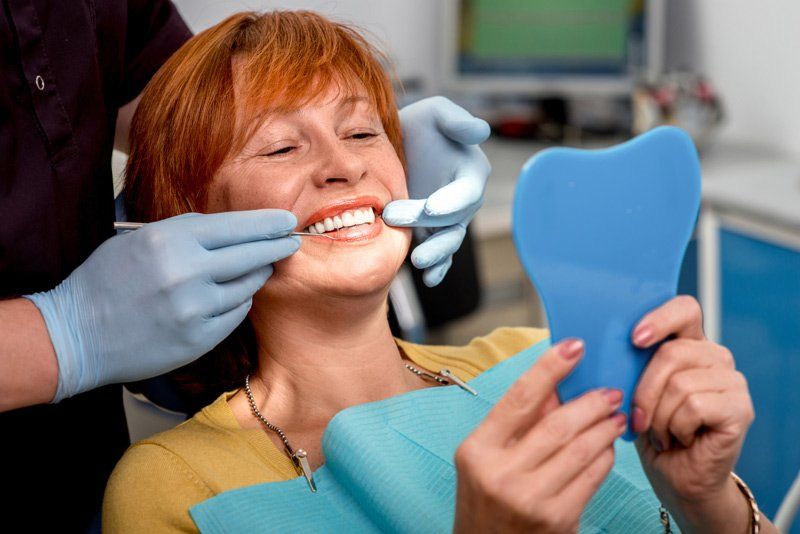Need Dentures? You May Need to Remove Tori First

If you have a lot of missing teeth or severe decay in remaining ones, your dentist may recommend partial or full dentures. Dentures are much more than a cosmetic solution. You will talk and eat easier with dentures.
Additionally, when your teeth are severely decayed, you could be in a lot of pain and at risk for abscesses and infection. If you remove these decayed teeth and replace them with dentures, you'll improve your health and eliminate any oral pain.
Before you can get dentures, however, you may need to remove oral tori. Read on to learn more about these.
What Are Tori?
Tori are benign bony growths that can occur in the upper and lower jaw. Tori are usually near the molar or premolar area. In the upper jaw, they can be seen on the side of the palate; in the lower jaw, they are usually adjacent to the tongue. They may look like nodules of gum tissue and can be very big or very small. Some people have only one protrusion, while other people may have lobulated tori.
What Causes Tori?
Doctors aren't quite sure what causes tori, but they could be linked to bruxism (teeth grinding) or inflammatory responses.
Tori are also more common in males than females, as well as in Asian and Inuit populations.
Why Do You Need to Remove Tori for Dentures?
A lot of patients don't need to remove tori since they are just benign growths. However, they are often removed if a patient needs dentures. A few reasons for removal exist.
For dentures to fit properly, they need support from underlying bone structures. Upper dentures are supported by the hard palate and upper alveolar ridge, while the lower dentures are supported by the lower alveolar ridge and retromolar papilla, which is an area of soft tissue behind the wisdom teeth. If tori are in the way, then the dentures cannot properly fit around the underlying bone structures.
Improperly fitting dentures can be painful to wear since they may cause gum tissue to be pinched. Also, poor-fitting dentures can rock or become loose when you try to talk or eat. Food debris can also catch underneath tori, which could then work itself between the denture prosthetic and your ridges, thus causing pain.
Another possible issue that tori can cause is speech difficulties. You may need to adjust your speech patterns as you get used to full dentures, and tori can interfere with tongue movements and make that difficult.
Lastly, tori may need removal if you get immediate dentures. Immediate dentures go on the same day after the dentist removes natural teeth so that you don't have to go without teeth until the next dental visit. These dentures act like a bandage and protect gum tissue until final dentures can be processed. Again, if you have tori, then the immediate dentures may not fit properly.
What's the Surgery Like?
A general dentist or oral surgeon can excise the tori and then stitch up the surrounding gum tissue. While tori can be removed under local anesthetic, some offices opt for IV sedation - especially if you have a poor gag reflex.
The surgery is like a tooth extraction in terms of recovery. You can go home after surgery, but you may not be able to eat until the anesthetic wears off so that you don't accidentally bite your lips or cheek.
Your dentist may prescribe some painkillers, and he or she will give you an instruction pamphlet on what you can or cannot eat. You'll likely need to follow a soft food diet and try to chew on the opposite side of your mouth of the surgical site.
Once the tori are removed and the site is healed, then you can get dentures that properly fit. Contact us at Rabel Family Dentistry to learn more about dentures and what needs to be done beforehand to make sure they fit well.






